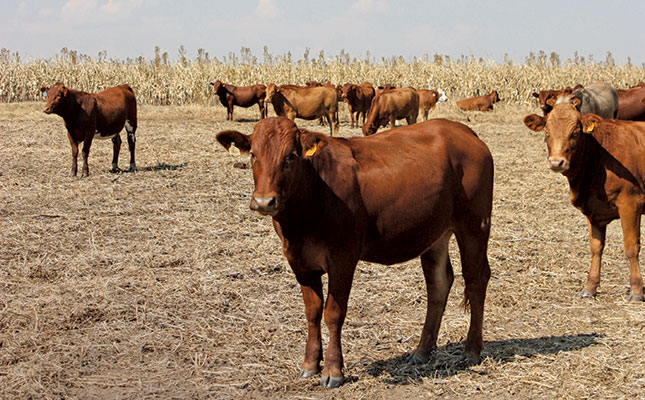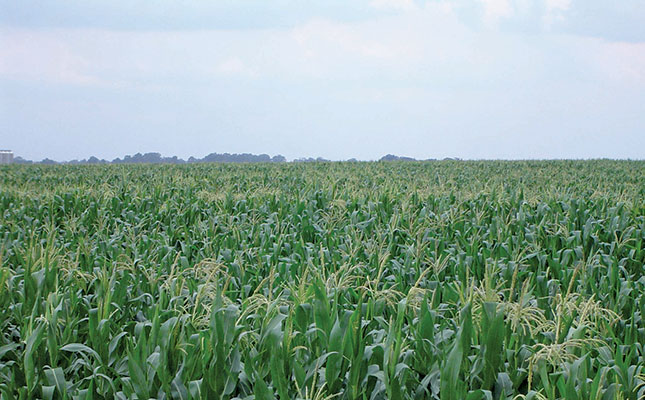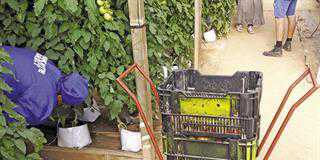
Gene editing technology has been around for several years, but an inability to pinpoint exact genes and their functions, and change them for specific outcomes, has made it a laborious process.
However, the discovery of the CRISPR-Cas9 technology has not only made quick identification and editing possible, but has provided a solution to the problem scientists have faced in providing affordable technology that will enhance agriculture. Part of the problem is that it is still highly controversial.
What is gene editing?
The term ‘genome’ generally refers to the entire sequence of DNA of an organism. The genome includes genes, which are sequences of DNA with specific functions involved in the production of the proteins needed to carry out many biological roles.
It also includes regions of DNA that promote or inhibit gene activity, and regions that do not appear to affect protein production or function.
is where gene editing comes in, as it gives scientists the ability to delete or multiply certain genes to either stop producing certain proteins or make more of them.
The result is plants or animals that are disease resistant, and crops that can produce higher yields.

Andrew Bennett, head of technical development for Africa at Bayer, says gene editing is anything that alters the genes in an organism.
“Even conventional breeding, where you cross one plant with another, falls under gene editing. However, traditional methods have been costly and it took many years to pinpoint which genes produced the proteins [that need to be edited] to enhance a crop. With CRISPR- Cas9, gene editing has become more precise, and therefore results are obtained quicker.”
CRISPR-Cas9 has two components: CRISPR (clustered regularly interspaced short palindromic repeats) refers to the basis of the guide system that finds the target, or the specific sequence of the DNA that is to be modified; and Cas9 (CRISPR-associated protein 9) is the protein that cuts the DNA at the target site. Bennett explains that with CRISPR technology, a probe can be sent into the gene to repair or alter it.
“CRISPR is a natural genetic defence system that protects certain bacteria from viral attack. When a virus attacks a cell, it injects its DNA into the cell, which causes the cell to multiply and make more of the virus. This is a natural process that happens in plants and humans.
“In some bacterial cells, there are repeating sequences that are similar to the viral DNA, which is there to identify the virus in the DNA. Once this identification has been made, it prompts other genes in the bacteria to go and cut up the viral DNA, effectively fighting it off and preventing it from replicating and killing off the bacteria. Using this technology where the repeating sequence identifies the sequence in the virus, we are able to apply this to a non-viral cell to identify a gene in the target organism’s cell, and that action can snip the gene and silence or duplicate it.
“In practice it means that if there is a single gene producing a certain amount of protein and you can replicate that gene to double the amount of protein, it then doubles the effect the protein has on the plant.
“So if that protein, for example, is a pest-fighting protein, by doubling it you can increase the plant’s pest resistance,” says Bennett.
A natural process
Cristobal Uauy, a professor in the Department of Crop Genetics at the John Innes Centre in the UK, says that the gene editing process is not unlike the natural processes that occur in nature every day.
“We see genetic variation, and underlining that is genetic mutation occurring naturally. An example is the broccoli family where we have Brussel sprouts and cabbage. It’s actually the same species that has just mutated in different ways over time.”
He explains that each living cell consists of DNA sequences that look like a string of A, C, T and G letters that make up a genetic code.
“To edit genes, we need to find out what each of those letters does, and how it affects the plant’s performance on the land so we can find the genes that could provide better nutrition or tolerance to drought.
“What happens during mutations is that some of the letters are deleted or changed, which will be enough to change the characteristics of a plant, making it more or less susceptible to diseases. Through gene editing, this process can be replicated instead of waiting for it to occur naturally on the land.”
Uauy says that people are generally fearful of gene mutations, despite the fact that humans and plants are constantly mutating.
“Around 60 to 100 mutations are passed on to our offspring. The same thing happens in a wheat land. If we take one wheat seed and compare it to the mother plant, we will see between 80 and 100 mutations; because of this we get genetic variations.
“If we multiply that in a hectare of wheat, we will see millions of mutations happening on a wheat land every day. But it is hard to identify a single wheat seed in a whole land to find the mutation we want that can improve the overall wheat crop.
“In traditional breeding, two plants that have desirable characteristics are crossed to create a hybrid that has the best of both worlds. With gene editing, we take the whole sequence of the wheat genome and search for the trait we want through the CRISPR search system. We then use the Cas9 to cut the gene.
“In the real world, this translates in the sequence as one of the A, C, Ts or Gs changing to, for example, a T. So the whole sequence still looks very similar as a whole to the sequence where the naturally occurring mutation took place. This is an important point because mutations that occur via gene editing are indistinguishable from naturally occurring mutations,” he says.
Agricultural benefits
Innovations and improvements in agriculture’s sustainability and profitability are plentiful with gene editing. Uauy believes there are clear opportunities to improve the nutritional quality of crops and make them more adaptable to different environments, which will become essential in the backdrop of climate change.
“As an example, we have seen low gluten wheat engineered with CRISPR-Cas9. There are a lot of genes that produce gluten, but with this new technology, several wheat regions with the protein that produces the allergenic property can be pinpointed. Now wheat flour can be produced that doesn’t have the allergenic property, but can still ultimately make bread.”
Uauy adds that although a single mutation in a gene can be very subtle, it can result in a 6% difference in the weight of grain.
“Using gene editing, we can use that search function to find the gene that influences weight and reproduce it several times to make a plant that produces grain that is substantially heavier, thereby increasing the yield per hectare,” he says.
Research is under way to implement gene editing to produce livestock that is more resilient towards disease and rising temperatures.
Speaking about the benefits of gene editing in livestock, Prof Appolinaire Djikeng, director of the Centre for Tropical Livestock Genetics and Health at the University of Edinburgh in Scotland, says that gene editing, along with more targeted traditional crossbreeding, will lead to healthier and more productive livestock that can significantly improve the livelihoods of poor farmers in Africa, who rely on small herds to feed their families and earn an income.
Projects that are currently being worked on include chickens that are resistant to Newcastle disease, dairy cattle that are resistant to East Coast fever and cattle that cope better with heat.
In terms of producing cattle that are more heat resistant, a gene is edited to ensure that cattle grow less hair, allowing them to sweat more. This could see their body temperatures reduce by 0,5°C.
Scientists have already used gene editing to produce pigs that are resistant to the fatal porcine reproductive and respiratory syndrome by altering the DNA code at precise points to introduce specific characteristics.
Genetic modification
Uauy says that gene editing and genetic modification are not the same. “With gene editing, there is no foreign DNA added and everything that has been done could have occurred naturally.”
Bennett adds that genetically modified organisms (GMOs) are produced when genes from one organism are placed into another.
“Modification adds a gene and/or a promoter that makes it produce more of what it is designed to do, so you get a bigger effect. With editing, it is as simple as switching a gene on or off rather than adding something new.”
Dr Hennie Groenewald, executive manager of Biosafety South Africa, says that while genetic editing is indistinguishable from processes that occur in nature, there is a chance that it may fall foul of public perception.
“The basis for this is the same as the reason why we have skewed perceptions regarding GMOs, namely inaccurate risk perceptions fanned by organisations and individuals with a particular world view and value system. Unfortunately, skewed perceptions tend to be based on the fact that [this process] is a human intervention, and not on the quantum, genetic basis or science of the change.”
Uauy agrees, and says that up until now, much of the legislation for genetic modification and gene-edited crops has not been based on scientific knowledge.
“Of course, we need to be very mindful of public opinion and discuss the merits and demerits of this technology from a scientific point of view. Much of the GMO debate is centred on emotional arguments rather than on science. We need to trust the science while taking into account the emotion that people have with [regards to] food.
“In the case of gene editing, the majority of cases are deletions or mutations that occur naturally. So, if we say 500 000 random mutations are safe, then why would one mutation in one specific gene not be safe?”
Email Dr Hennie Groenwald at [email protected], Andrew Bennett at [email protected], or Prof Cristobal Uauy at [email protected].











